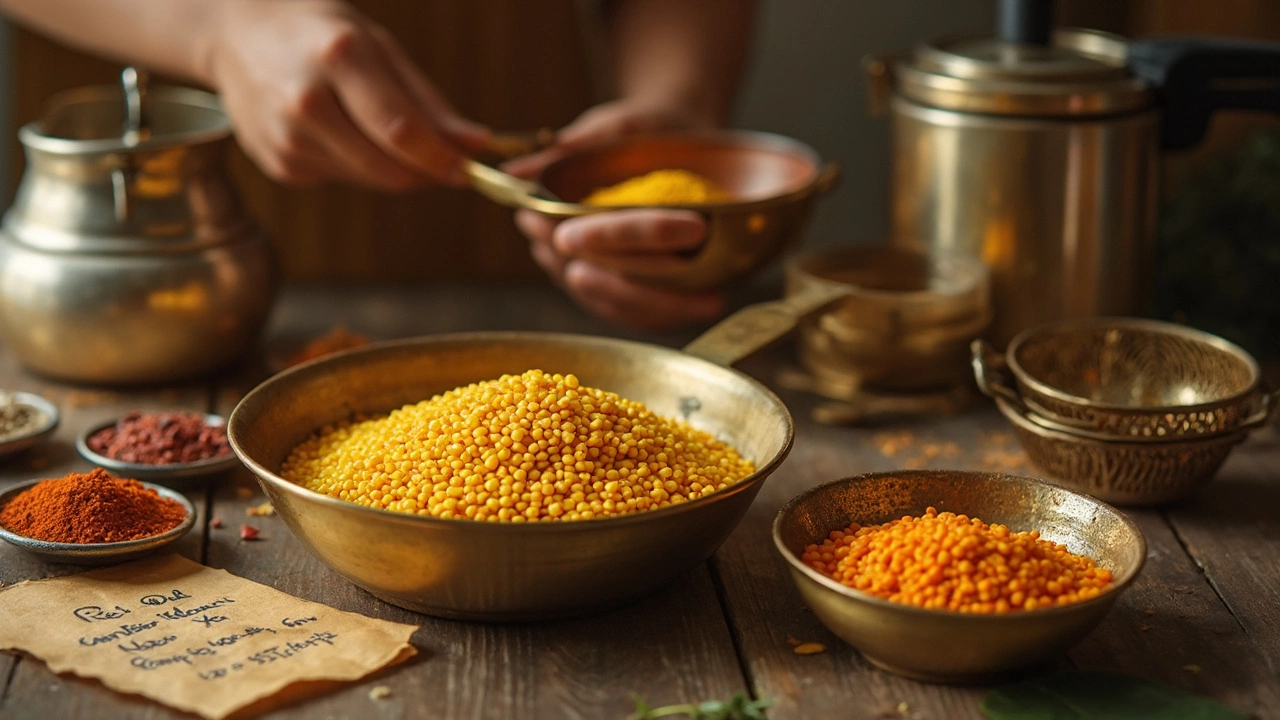Top Dal Tips: Cook Perfect Lentils Every Time
If you’ve ever ended up with mushy or hard dal, you’re not alone. A few simple steps can turn any lentil into a fluffy, flavorful bowl. Below are the most useful dal tips you can start using today.
Prep and Cooking Basics
First thing: always rinse the dal. Put the lentils in a bowl, fill with water, swirl, and pour out. Do this two or three times until the water runs clear. Rinsing removes dust and some of the natural phytic acid that can make digestion tricky.
Soaking is the next big tip. For most split dals (toor, moong, masoor), a 15‑20 minute soak is enough. Whole dals (black gram, whole moong) benefit from an hour or more. Soaking cuts cooking time and gives a more even texture.
When you’re ready to cook, use the right water‑to‑dal ratio. A good rule of thumb is 3 cups of water for every 1 cup of split dal and 4 cups for whole dal. Too much water makes the dal watery; too little leaves it dry.
Pressure cookers are a dal‑cooking shortcut. For split dal, 1 whistle (medium heat) usually does the trick. Whole dal may need 2 whistles. If you don’t have a pressure cooker, a regular pot works—just keep the heat low and stir occasionally to prevent sticking.
Check the dal a few minutes before the timer ends. It should be soft but not falling apart. If it’s still firm, add a splash of hot water and cook a bit longer. Remember, dal continues to soften after you turn off the heat.
Flavor Boosters & Variations
The magic of dal isn’t just in cooking it right; it’s in the tempering (tadka). Heat a tablespoon of oil or ghee, add a pinch of mustard seeds, and wait for them to pop. Then toss in cumin, dried red chilies, a few curry leaves, and a minced garlic clove. Let the aromatics sizzle for a few seconds before pouring the mixture over the cooked dal.
Fresh herbs add brightness. A handful of chopped cilantro or a few sprigs of mint can lift a heavy bowl instantly. If you like a tangy kick, stir in a teaspoon of lemon juice or a dash of tamarind paste right before serving.
Want a richer texture? Add a splash of coconut milk or a dollop of plain yogurt. This works great with toor dal or chana dal, giving a creamy finish without extra cream.
Don’t forget the optional veggies. Chopped tomatoes, spinach, or diced carrots can be cooked together with the dal. They add nutrients and make the dish more filling.
Storing dal is easy. Let it cool, then transfer to an airtight container. It keeps in the fridge for up to 4 days. Reheat with a splash of water to bring back its smooth consistency. Dal also freezes well—portion it out, freeze for up to 2 months, and thaw when needed.
That’s it—simple, practical dal tips you can try right now. Rinse, soak, use the right water ratio, give it a good tempering, and you’ll have a tasty, healthy bowl every time. Happy cooking!
How Much Dal is Enough for 2 People? Your Simple Serving Guide
If you've ever wondered how much dal you actually need to cook for two people, you're not alone. This article breaks down the exact quantity, gives you simple tricks for perfect results, and covers adjustments for hungry days. Find out how dal expands, which types cook up differently, and easy ways to avoid leftovers. No more guessing or wasted food—just clear advice and kitchen-friendly tips.
